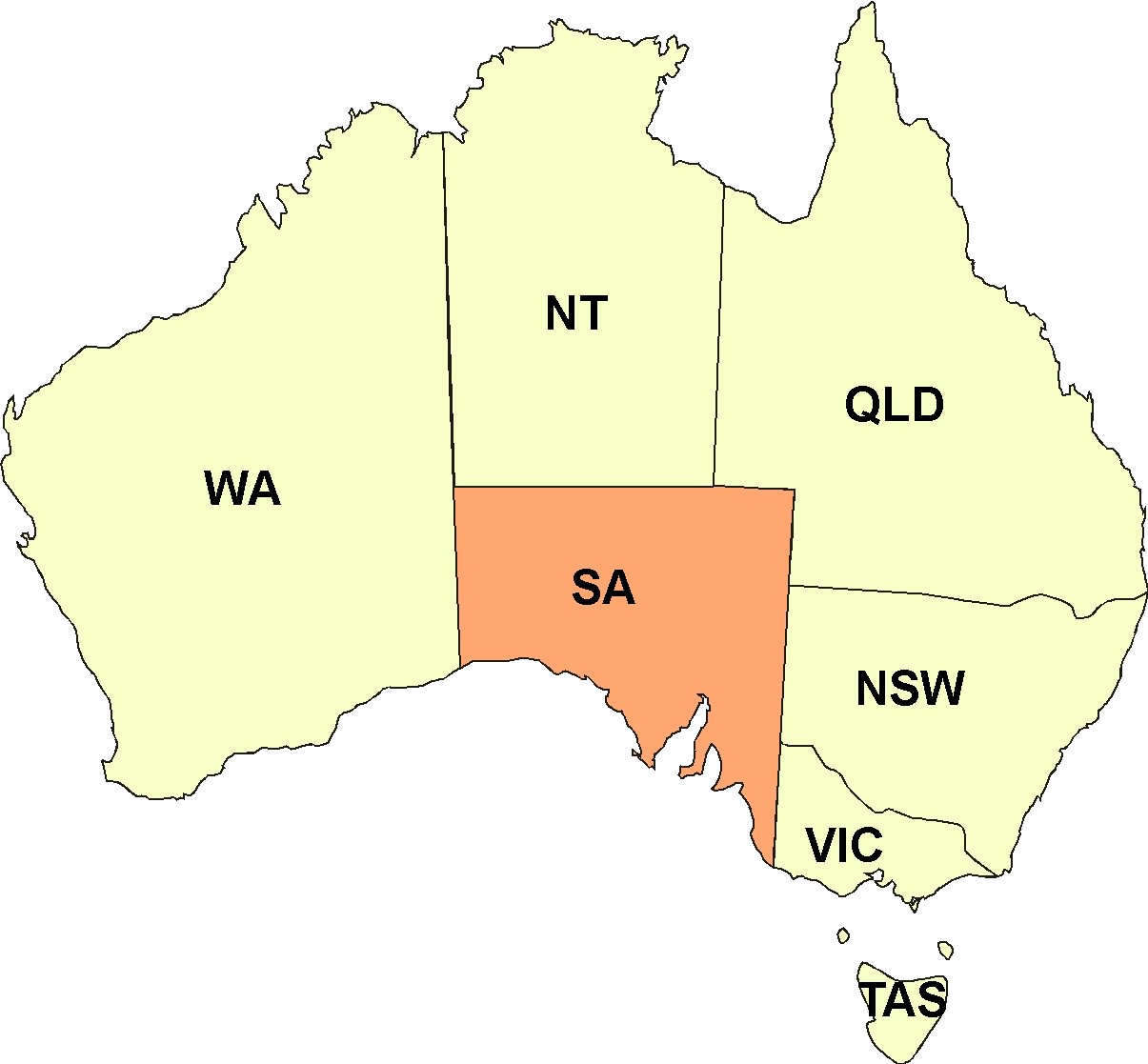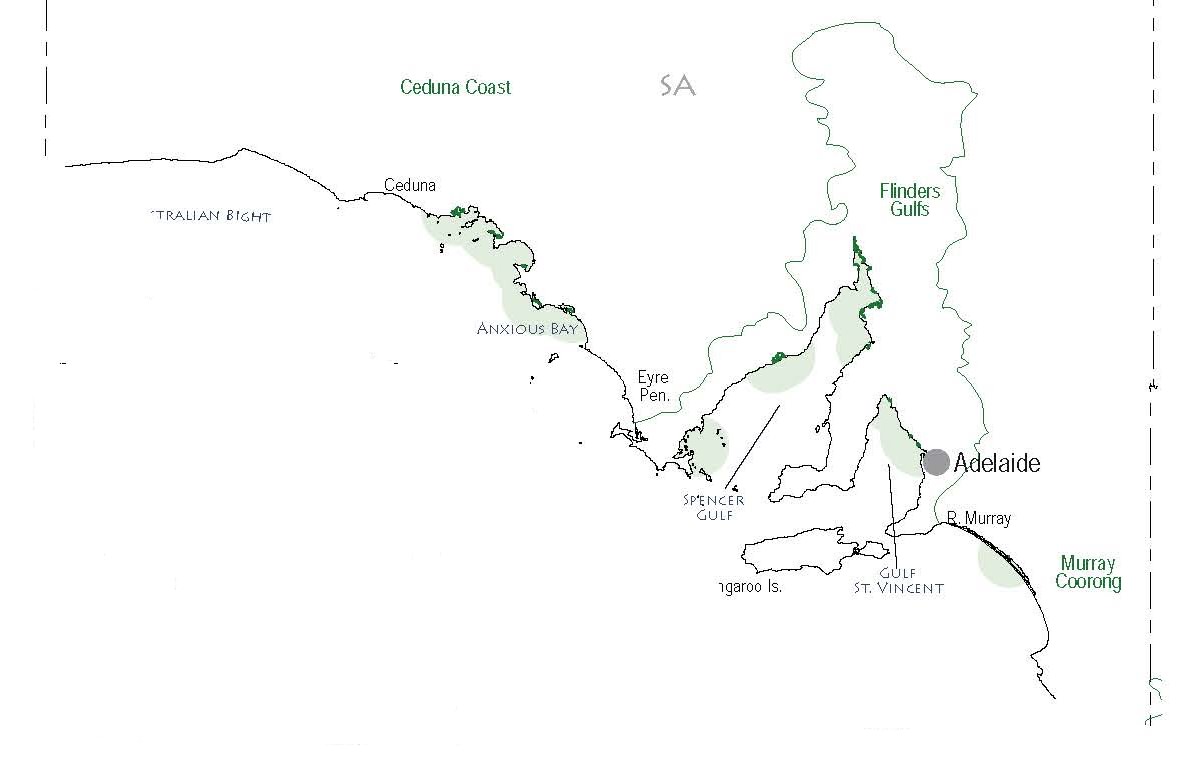South Australia 
Mangroves in South Australia are confined to sheltered shores in the Gulf of Saint Vincent and Spencer Gulf, and protected bays on the Eyre Peninsula. Low rainfall in this driest of all Australian states creates a scarcity of estuaries, with small amounts of freshwater, nutrients and sediments entering the sea. Coastal waters are therefore oligotrophic, except for seasonal upwelling events off the Eyre Peninsula and the south-east. The Gulfs are further considered inverse estuaries,as salinity is higher inshore and temperature fluctuations larger at the top of the Gulfs than towards the ocean. Mangroves can be found generally seaward of saltmarshes and often interspersed with seagrass beds and mudflats.
For more species details see the 2006 book Or, check out the MangroveWatch apps!
No Active Local Groups with MangroveWatch Training
Currently there are no active MangroveWatch groups in South Australia, if you are interested in starting a group fill out the form below;
2018 List of Mangrove Plant Species in South Australia
– their presence noted for 4 catchment regions (see Map above)
- Avicennia marina var. australasica – CC, FG, MC
- Avicennia marina var. marina – CC, FG
These mangroves range from extensive and dense forests to sparse and isolated stunted trees at more extreme settings. The total area of mangroves in South Australia is around 156 km², and there is only one species, Avicennia marina. Trees of A. marina around Adelaide are genetically intermediate between two varieties, var. marina and var. australasica. Populations in Spencer Gulf and along the west coast of Eyre Peninsula might be more closely related to var. marina, while those to the east are perhaps more like var. australasica.
You can find out more detail about these species from our book and smart device apps
For Sighting Records
Contact: mangrovewatch@gmail.com


